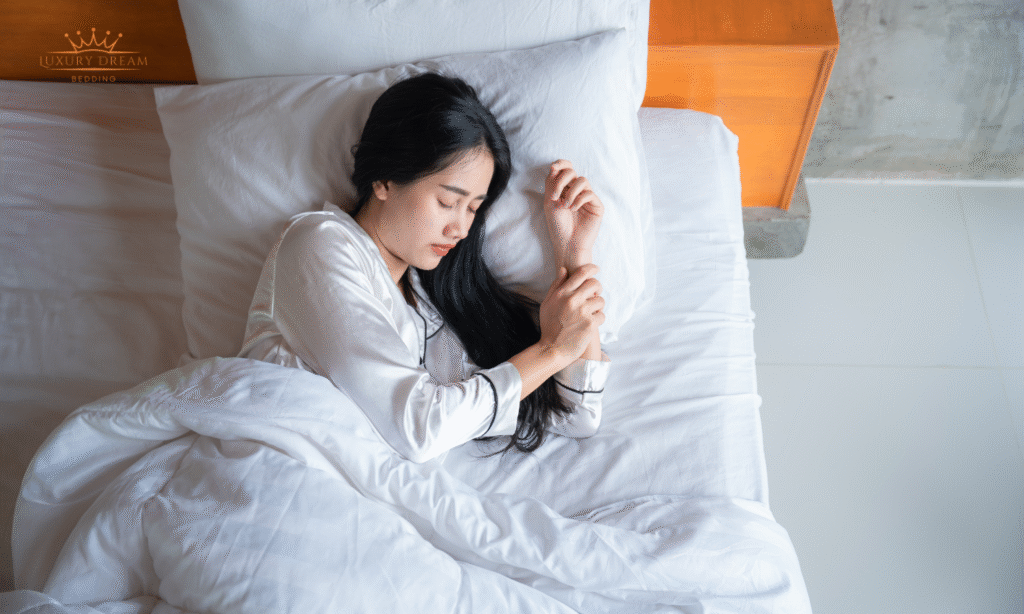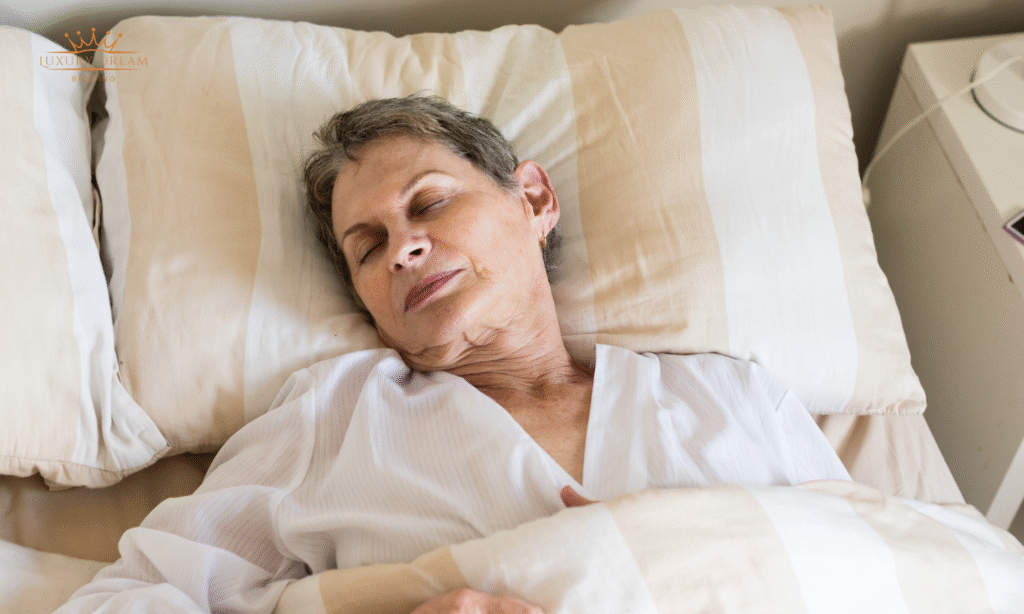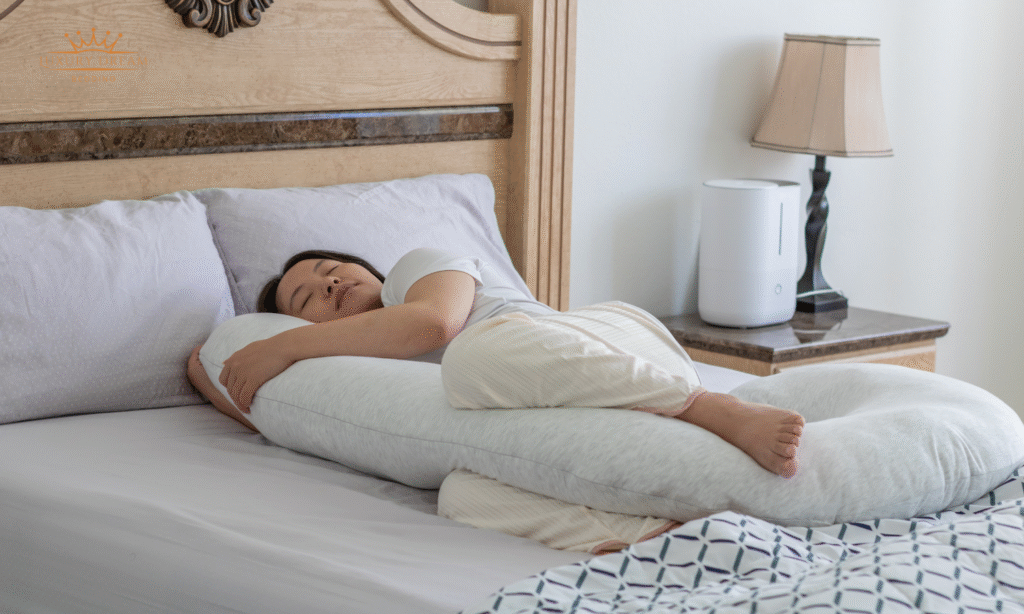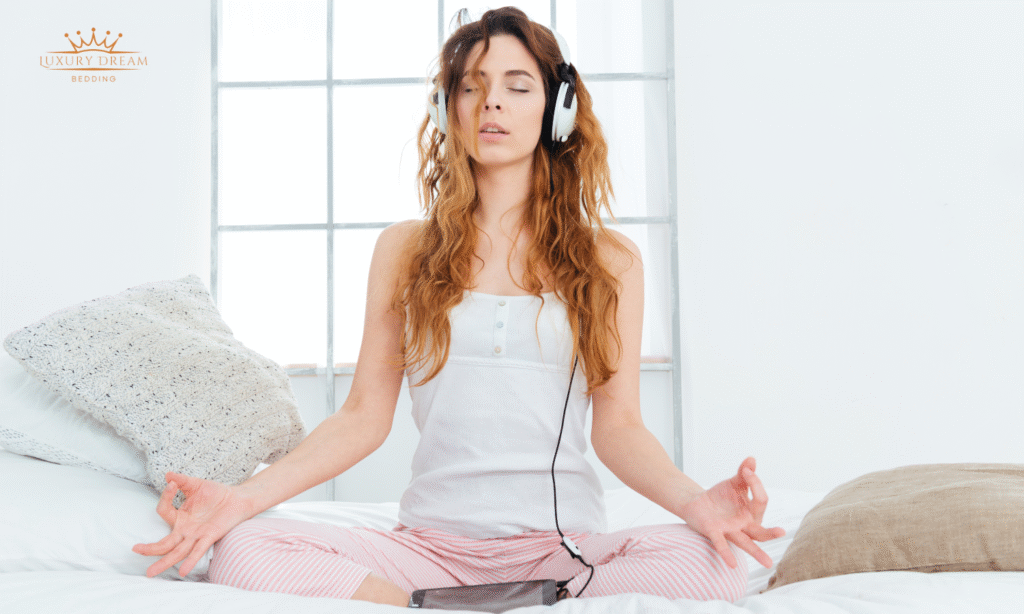Headaches are among the most common health complaints, affecting millions worldwide. From mild tension headaches to intense migraines, they can severely disrupt daily life and reduce overall well-being. While medications and therapies offer relief, one of the most underrated yet effective remedies lies in something incredibly simple: your sleeping position.
Adopting the right sleeping posture can reduce pressure on the head and neck, improve blood circulation, and help soothe painful symptoms. In this article, we’ll guide you through the best sleeping positions for headache relief, along with practical tips to boost their effectiveness.
I. Why Sleeping Positions Matter for Headache Relief

The way you sleep directly impacts your physical comfort. An improper posture can put pressure on your spine, shoulders, neck, and head — often leading to muscle tension, restricted blood flow, and ultimately headaches. On the other hand, proper sleep alignment can:
- Relieve tension in the neck and head by allowing muscles to fully relax.
- Enhance blood circulation, ensuring sufficient oxygen supply to the brain.
- Support spinal health by maintaining its natural curve, minimizing nerve compression.
That’s why paying attention to how you sleep can be a natural, accessible solution to managing and preventing headaches.
II. Best Sleeping Positions for Headache Relief
Here are expert-recommended sleeping positions that may help reduce headaches quickly and effectively:
1. Lying on Your Back with Neck and Knee Support
Back sleeping is one of the best positions for headache relief, especially for tension headaches or neck-related pain.
How to do it:
- Use a thin to medium-height pillow (around 10–15 cm) to support your head and keep your neck aligned. Avoid overly thick pillows, as they may strain the neck.
- Place a small pillow under your knees to support your lower back’s natural curve.
- Keep your arms relaxed at your sides and avoid hunching the shoulders.

Benefits:
- Reduces pressure on cervical vertebrae.
- Promotes better blood flow to the brain.
- Helps relax the muscles around the neck and shoulders.
Pro tip: If you’re experiencing a migraine, place a cool compress or chilled towel on your forehead while lying down for extra relief.
2. Side Sleeping with a Body Pillow
Side sleeping is a comfortable and supportive position for many, especially those experiencing stress-related headaches or migraines.
How to do it:
- Choose a firm pillow that fills the space between your neck and shoulder, keeping your spine in a straight line.
- Place a pillow between your knees to prevent hip and spine rotation.
- Lie on the side that feels least sensitive if you suffer from one-sided headaches.

Benefits:
- Eases neck and shoulder pressure.
- Enhances blood flow, especially beneficial for tension headaches.
- Reduces strain on hips and lower back.
Tip: Switch sides periodically to avoid putting uneven pressure on the body.
3. Lying on Your Stomach (Only in Certain Cases)
Although stomach sleeping is generally discouraged, some individuals find it beneficial in specific situations, provided it’s done with proper pillow support.
How to do it:
- Use a very thin pillow or none at all to prevent the neck from being overly bent backward.
- Place a slim pillow under the pelvis or lower abdomen to reduce pressure on the lumbar spine.
- Turn your head to the side gently, avoiding one-sided stiffness.

Benefits:
- May relieve pressure in certain parts of the head for specific people.
- Can offer comfort for habitual stomach sleepers if adjusted properly.
Caution: Not suitable for those with chronic neck or back pain. If it causes discomfort, try switching to back or side sleeping.
III. Additional Tips to Maximize Headache Relief While Sleeping
In addition to choosing the right sleeping posture, here are some complementary practices to enhance your results:
- Choose the right pillow: Go for medium-firm pillows or orthopedic/memory foam ones that offer consistent neck and head support.
- Create a restful sleep environment: Keep your bedroom cool, dark, and quiet to promote deeper, more restorative sleep.
- Practice relaxation techniques: Deep breathing or light meditation before bed can calm your nervous system
- Stay hydrated: Dehydration is a common headache trigger. Drink enough water during the day and avoid alcohol or caffeine before bedtime.
- Gentle neck and shoulder massage: Loosens tight muscles and promotes better blood flow to the head and neck region.

IV. When to See a Doctor About Headaches
While sleeping positions for headache relief can be very effective, certain symptoms require medical attention. Consult a healthcare provider if:
- Headaches are frequent, intense, or long-lasting.
- You experience nausea, dizziness, or blurred vision with your headaches.
- Pain is sudden and severe, or occurs after a head injury.
- Headaches are accompanied by unusual neurological symptoms, like numbness or speech difficulties.
These may be signs of more serious conditions like chronic migraines, hypertension, or neurological disorders.
Headaches are more than just an inconvenience — they can deeply affect your comfort, performance, and emotional well-being. Fortunately, something as simple as adjusting your sleeping position can make a significant difference.
By practicing the recommended sleeping postures for headache relief and incorporating relaxation-friendly habits, you can manage headaches naturally and improve your sleep quality.
If symptoms persist or worsen, don’t hesitate to reach out to a medical professional for proper diagnosis and treatment.
